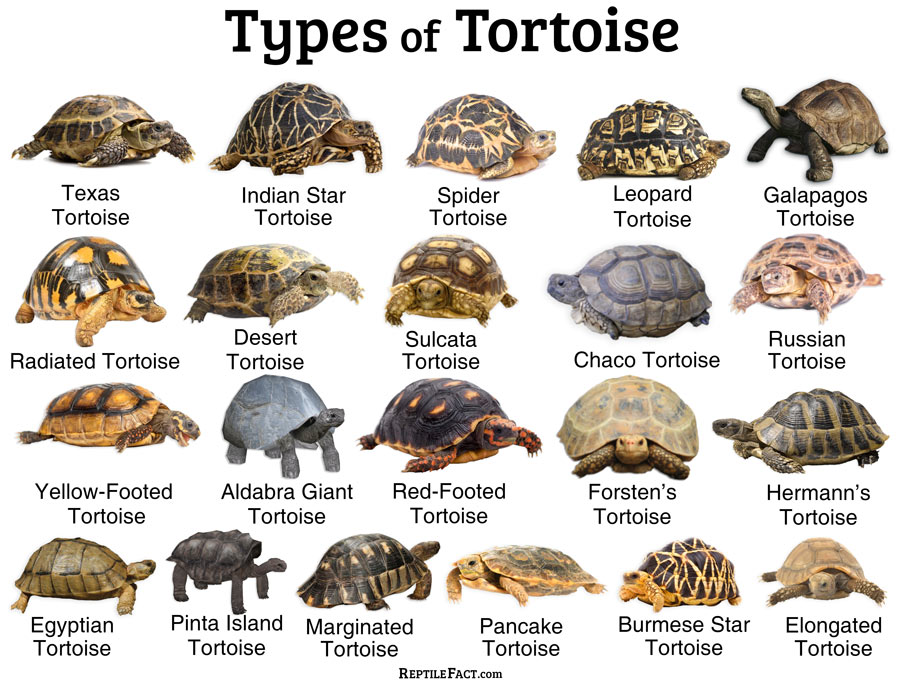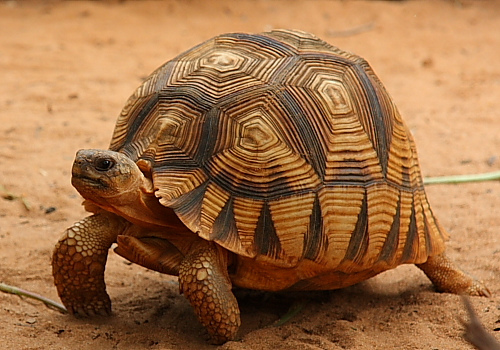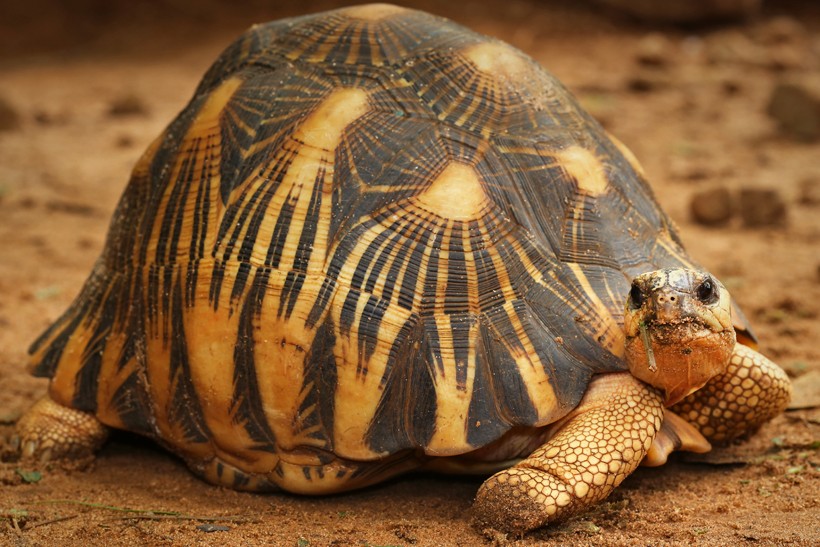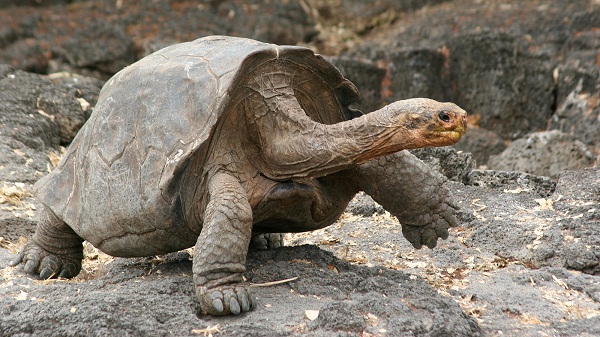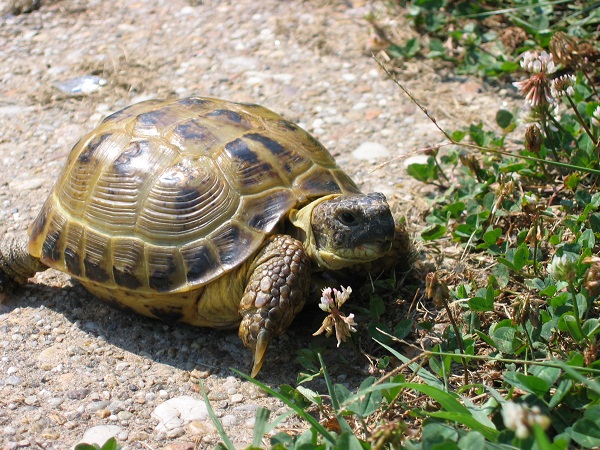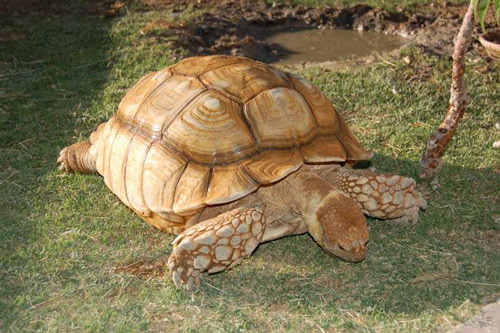Tortoises
Tortoises are land-dwelling reptiles in the Testudines or turtle order, and Testudinidae family. The primary distinguishing feature of true tortoises is their having completely terrestrial habitats as the other turtle species are at least semi-aquatic.
Like all species in the turtle family, tortoises have a hard shell (carapace+plastron) covering their whole body, with only the head and feet protruding out. Their entire body, including the head, retreats back into the shell in case the animal detects any threat or danger.
Below is a list of all extant tortoise species according to their genera.
Aldabrachelys |
||
| Aldabran giant tortoise | ||
Astrochelys |
||
| Ploughshare tortoise | Radiated tortoise | |
Centrochelys |
||
| Sulcata tortoise/African spurred tortoise | ||
Chelonoidis |
||
| Red-footed tortoise | Yellow-footed tortoise | Chaco tortoise |
| Galápagos tortoise (Chelonoidis nigra complex)
[giant tortoises from the archipelagos of Galápagos and Aldabra] |
||
| James Island giant tortoise | San Cristobal giant tortoise | Pinta Island giant tortoise [Exinct] |
| Pinzon giant tortoise | Volcán Wolf giant tortoise | Española giant tortoise |
| Santa Cruz giant tortoise | Fernandina giant tortoise | Isabela Island giant tortoise |
Chersina |
||
| Angulated tortoise | ||
Chersobius |
||
| Karoo padloper/Boulenger’s Cape tortoise | Speckled padloper | Nama padloper |
Geochelone |
||
| Indian star tortoise | Burmese star tortoise | |
Gopherus |
||
| Texas tortoise | Sonoran desert tortoise | Mojave desert tortoise |
| Bolson tortoise | Gopher tortoise | |
Homopus |
||
| Greater padloper | Parrot-beaked tortoise | |
Indotestudo |
||
| Forsten’s tortoise | Elongated tortoise | Travancore tortoise |
Kinixys |
||
| Bell’s hinge-back tortoise | Lobatse hinge-back tortoise | Speke’s hinge-back tortoise |
| Natal hinge-back tortoise | Forest hinge-back tortoise | Home’s hinge-back tortoise |
Malacochersus |
||
| Pancake tortoise | ||
Manouria |
||
| Impressed tortoise | Asian giant tortoise | |
Psammobates |
||
| Geometric tortoise | Tent tortoise | Serrated tortoise |
Pyxis |
||
| Flat-backed spider tortoise | Spider tortoise | |
Stigmochelys |
||
| Leopard tortoise | ||
Agrionemys |
||
| Russian tortoise | ||
Testudo |
||
| Marginated tortoise | Hermann’s tortoise | Egyptian tortoise |
| Spur-thighed tortoise | ||
Habitat: Where do Tortoises Live
Depending on the species, they can live in any terrestrial habitat from sea level to mountain areas of elevations up to about 1,000 meters. Most tortoises prefer semiarid habitats, but are also commonly found in arid grasslands, deserts, shrublands, and wet evergreen forests.
Can Tortoises Swim
Being strictly land animals, tortoises are not good swimmers and can drown easily.
Do Tortoises Hibernate
Being cold-blooded, tortoises do need to go into a state of inactiveness to survive the colder seasons. However, this state is called brumation and not true hibernation. They find a shelter or dig a burrow and stay there till the weather conditions become favorable again for them to come out.
What Do Tortoises Eat
They are primarily herbivorous, feeding on weeds, grasses, leaves, small plants, flowers, and fruits, with many tortoises also occasionally feeding on insects, worms, and even carrion. Some species, like the gopher tortoise, are exclusively herbivores.
Species living in arid and desert regions depend more on succulents for food, while those living in wet areas can feed on leaves, flowers and other available plant matter.
Juveniles have a higher protein requirement, so their diet contains higher amounts of legumes and small invertebrates, even for strictly herbivore species.
Mode of Reproduction and Lifespan of Tortoises
These reptiles reach sexual maturity by the size of their carapace and not their actual age. The size to attain to reach maturity varies between species. Both males and females become aggressive during the mating season, with the males fighting for the rights to mate with the females.
After mating, the female digs burrows to lay eggs and covers the nest with soil, sand, or dirt. The clutch size varies from 1-20, with the incubation period lasting for 100 to 160 days on average. The female leaves the nest unattended once egg-laying is complete. The hatchlings dig out of the nest and take care of themselves as adult tortoises do not take care of their young.
Lifespan: How Long Do Tortoises Live
They are the longest living land animals with an average lifespan of 80-150 years. A female radiated tortoise Tu’i Malila, who died in 1965 at the age of 188, is the longest living tortoise whose age has been verified. Some consider Adwaita, an Aldabra giant tortoise, to be the longest living tortoise, being aged about 250 years at the time of its death in 2006, though verification is needed to confirm this age.
Why Do Tortoises Live So Long
Studies show that the higher the metabolic rates are for an animal, the earlier it is likely to die. Though more research is needed to confirm why and how the rate of burning energy is related to longevity, it does partially explain why turtles have such long lifespans.
Interesting Fact
- Tortoises can hold their breath for extended periods, as they need to empty their lungs before going into their shell, and they do not breath till they can come out again. In fact, they can be heard exhaling loudly when they decide to retreat into their shell.
- Species belonging to warmer regions have a lighter colored shell than those native to colder places.
- One Galápagos tortoise named Harriet was known to have been taken care of both by English naturalist Charles Darwin (1809-1882), and Australian conservationist Steve Irwin (1962-2006) before it died in 2006.


